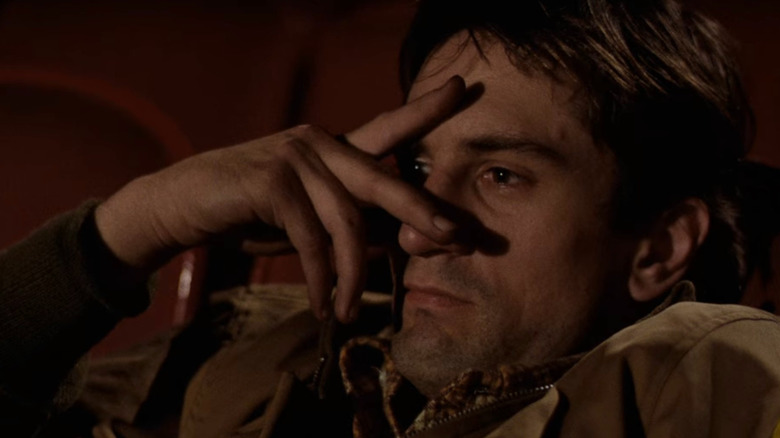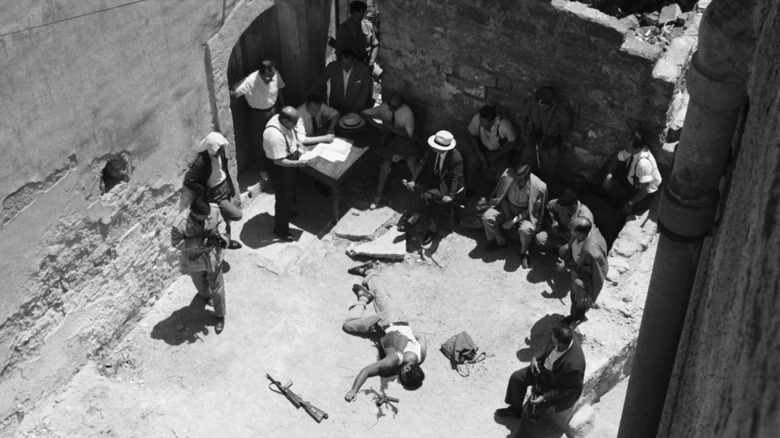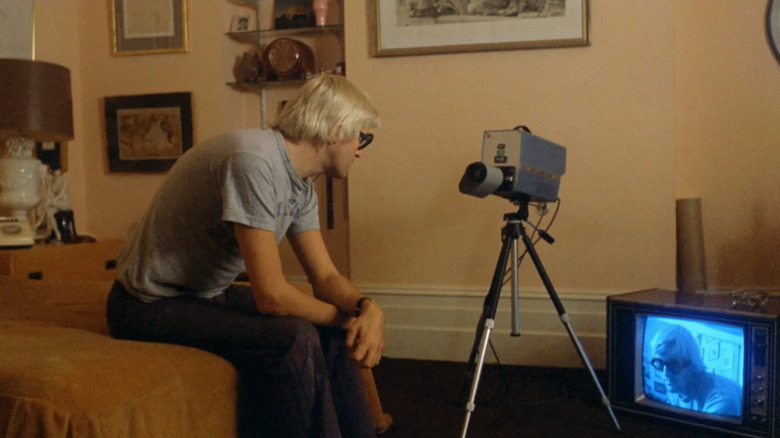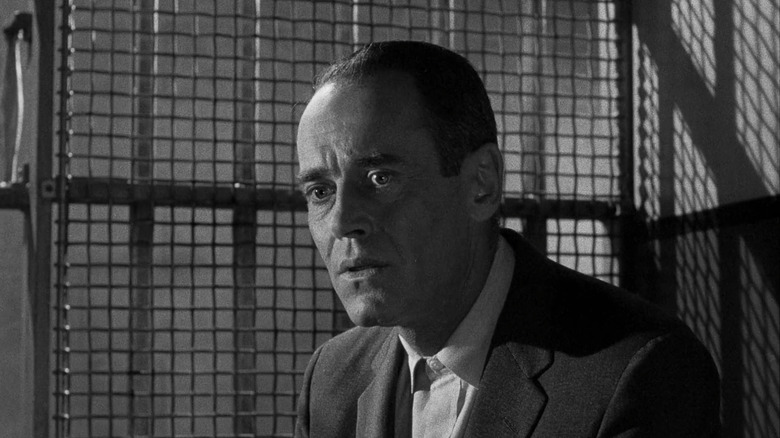Taxi Driver Derived Its Visual Style From Some Of Martin Scorsese's Favorite Films
One of the great joys in life is listening to Martin Scorsese talk about the movies he loves. Few people speak with more understanding and enthusiasm for an art for than Scorsese does with cinema. He is one of the true omnivores of the medium and absorbs every kind of movie from all over the world. The Film Foundation, which he co-founded back in 1990, is further proof of this, aiming to restore classic films from any era and any place with the goal of forever preserving the art form he cares so deeply about.
He also just so happens to be one of the greatest filmmakers of all time himself. Scorsese may have created a style that is distinctly his, but he will fully admit to what his influences are for any given picture. But his influences are rarely obvious upon a first glance. Take his 1976 film "Taxi Driver." It ended up a blatant source of inspiration for many films, ranging from the Seth Rogen comedy "Observe and Report" to Todd Phillips' "Joker." The filmmakers do not even need to tell you "Taxi Driver" has been firmly injected into those pictures. You see how Joaquin Phoenix's character behaves in "Joker" and all you can think about is "Taxi Driver" (or "The King of Comedy," another Scorsese film).
But when it comes to "Taxi Driver" itself, its points of reference are not as easily identifiable because Scorsese takes actual inspiration from the movies, but he does not replicate them. Here are just a couple of movies Scorsese spotlighted when discussing the creation of "Taxi Driver."
The toughness of Salvatore Giuliano
In an interview with the Directors Guild of America Quarterly, Martin Scorsese discussed a number of the movies that influenced "Taxi Driver." The first would not be obvious to most people, simply because I am guessing most people have not seen it. It's the 1962 film "Salvatore Giuliano," about the real-life Sicilian gangster of the same name, directed by Franco Rossi. The film has a nonlinear structure and is shot in black and white. Scorsese doesn't just take the aesthetic choices for "Taxi Driver." Instead he infuses them into his own vision, wanting to capture the vibe rather than re-creating the frames:
"... For 'Taxi Driver,' I screened Francesco Rosi's 'Salvatore Giuliano,' just because of the look of it, the tough, objective nature of his framing. There's something uncompromising about that framing and also about his narrative style, and I suppose there's also a bloodline thing because I'm Sicilian. I watch it once a year. It's about coming from that part of the world and feeling that you have a destiny you can't avoid — and that's the connection to Travis Bickle, I think. And the black-and-white photography is so beautiful; it creates a landscape in which these extraordinary things can happen and in which it can be this way. And that's what I wanted in color in 'Taxi Driver.'"
This is also a film Scorsese said was one of the 10 greatest when he voted for Sight and Sound's Greatest Films of All Time poll back in 2012, so this is a movie in his bones. "Salvatore Giuliano" feels like a movie Scorsese would respond to greatly, but you would not necessarily draw a straight line from it to "Taxi Driver." You might have an easier time drawing the line to "Silence" in its construction.
The objectivity of A Bigger Splash
One thing that always strikes me about "Taxi Driver" is the blending of the objectivity and subjectivity of the camera. In one instance, you will have the camera take on the point of view of Travis as he points a gun out a window, but then there are shots like Travis on the phone with Cybill Shepherd's Betsy where the camera seemingly gets embarrassed and has to look away from the conversation. In terms of balance, the objectivity occurs far more often than the subjective, as it is really difficult to truly get inside Travis' mind. Not only did he take inspiration from "Salvatore Giuliano" for that, but he also turned to a film released just a couple of years earlier, the documentary "A Bigger Splash." He goes on in the DGA interview to say:
"And I was also thinking about Jack Hazan's movie 'A Bigger Splash' about David Hockney. Again, there was just something about the way the images were framed, something very objective, a lot of head-on shots, which influenced the way I shot Travis' cab pulling up to the grocery store before his first murder — it's meant to look like a newspaper photo, to have the objectivity of a Weegee photo."
No one would classify "Taxi Driver" as having a documentarian approach. Whenever someone brings the film up as an influence, it's about spontaneity and a constantly moving camera. For Scorsese, it was an approach to perspective. He was making his own character study, and although his was fictional, taking this more objective approach would help ground Travis Bickle in the real world, even with the outrageously bloody climax.
The camera moves of The Wrong Man
Of course, no filmmaker gets by without being inspired by Alfred Hitchcock. He was one of the masters of the art form, and every director has at least learned a few lessons from his work. But when you hear talk about the Hitchcock films that generate sparks in the minds of other directors, they are the big ones: "Rear Window," "Vertigo," "Psycho," "North by Northwest," or plenty of others. Rarely do you hear that someone looked to his 1956 noir "The Wrong Man" from which to draw, but that is exactly what Scorsese did. In particular, he wanted to emulate how Hitchcock moved his camera:
"Well, in that case it's the camera moves, the small ones, all these insinuating, slow moves that look as if the camera itself were paranoid ... I can't analyze it. When you ask how I relate to old movies and great directors, I'd say it's more a matter of mood and impressions than anything else."
That last sentence is the key to true inspiration. It's mood and impressions that get the wheels spinning inside the heads of our great filmmakers. In the modern vernacular: He's looking for vibes. Scorsese has the ability to harness the vibes and make them his own. Replication doesn't further the art form. You use the past as a building block for your own work. Scorsese also cited "The Wrong Man" as an influence on "The Aviator" in that interview, which is a film that could not be more different than "Taxi Driver." It just goes to show you how important learning about the history of cinema is to making and appreciating movies. You never know when and how one film will inform and build upon another.



